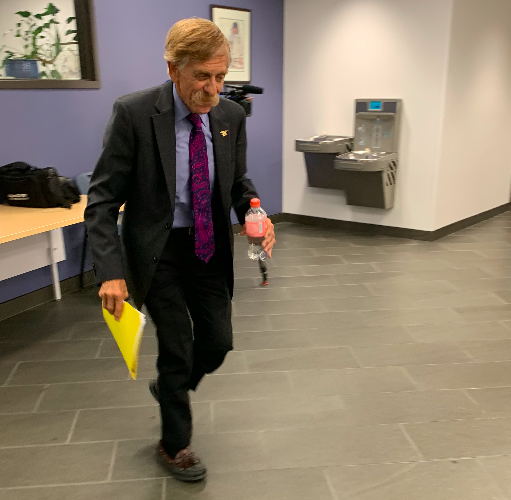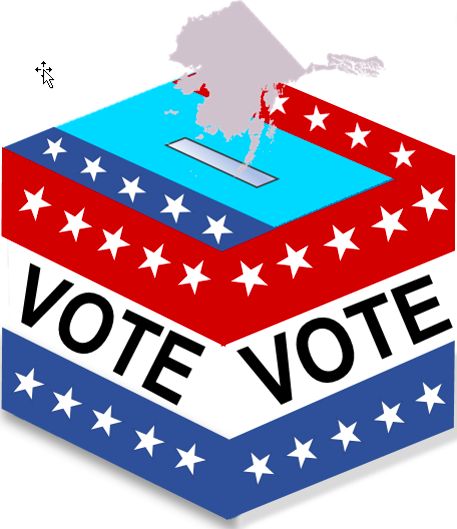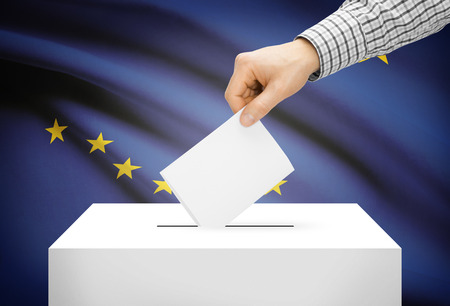Editor,
Voters choose their representatives and senators for a multitude of reasons and there are a multitude of votes and policies that every legislator must deal with.
Sometimes, a legislator is unable to complete their term and a vacancy occurs. There is time-honored process for filling the vacancy.
First, the local volunteers of the incumbent’s party (Democrat or Republican, typically) nominate replacements.
Then usually the governor selects a nominee from the list provided by the volunteers representing the vacant district of the same party as the person originally elected.
Finally, the members of the House or the Senate of the same party as the elected incumbent vote to approve or disapprove of the governor’s nomination.
There is give and take, and safeguards to ensure no one person or group can control the process. When the govrnor ignores the local volunteers, the Legislators usually support a nominee of the volunteer citizens.
The point is always to allow the people of the district to have the primary input, as long as the person they nominate is qualified.
The Legislature has never tossed aside the united advice of both the local party volunteers and the governor. Ever. That would be the height of arrogance and heavy-handed politics of the worst type.
Nevertheless, Senate President Giessel substituted her demand for purity over the residents of District M and the governor.
For the first time in the history of the State of Alaska, a person elected to the Legislature from the District, nominated by the volunteers representing the Party in the District and appointed by the Governor, has been rejected by the Senators of that Party.
The vote was six to six. There is no way to sugar-coat this: Such arrogance and disrespect has never been exercised before. Senate President Cathy Giessel lead just five of her colleagues (Senators Click Bishop, John Coghill, Natasha Von Imhof, Gary Stevens, and Bert Stedman) to reject Rep. Laddie Shaw.
They had no reason, no grounds, no honest objection, except they hate the Permanent Fund dividend. Their hatred for your PFD trumped all other issues, process, and precedent.
This is a dismal end to the long career of Sen. John Coghill. He has always previously done his best to uphold the Constitution and the principles of good government. Not this time.
However, the person responsible for this outrageous rejection of Laddie Shaw — a retired Navy SEAL, former director of the State Trooper Academy and Executive Director of the Police Standards Council, and someone who replaced Chris Birch in the State House, and was elected in a landslide — is Senate President Cathy Giessel.
Sen. Giessel has confused personal power with high standards of public service. Her arguments are ridiculous and disingenuous. She is quoted as making the assertion that since Sen. Birch had been opposed to the statutory Permanent Fund dividend, she would only allow someone who shared his views on that specific issue to be approved.
Never mind that the actual voters, the people of Senate District M in Anchorage who voted for Mr. Birch, also voted to elected two representatives who favored a full statutory PFD. The people of Senate District M are not rigid, one-issue voters.
The reality is that the Senate District M voters supported Mike Dunleavy for governor. Those same voters elected Laddie Shaw and Josh Revak to the State House and Chris Birch to the Senate. They knew what they were doing, and they were not simple one-issue fanatics.
It is pure arrogance and an absurd and preposterous demand that all applicants now bow to Cathy Giessel’s and Natasha Von Imhof’s hatred of the full PFD.
Their argument is that since Chris Birch was against a full PFD, only an identical person can be approved for that seat. But the voters of that same District elected two Representatives who are in favor of a full statutory PFD and a Governor who supports a full, statutory PFD.
The voters made complex choices based on many factors, Cathy Giessel and the five Senators who followed her lead substituted their desire kill the PFD and win at any cost and tossed aside a respected, elected, honorable veteran with a sterling record and character.
As the former Chair of the Alaska Republican Party, I am disgusted by the irrational statements and arrogance represented by this vote.
Chris Birch and I were political friends. I strongly supported his election to the State House and then to the State Senate. Certianly, he and I fiercely disagreed about the PFD. He opposed a full PFD, I supported a full, statutory PFD (as does the Alaska Republican Party). We did not let that one disagreement pollute our friendship or political partnership. Senator Giessel has embarassed herself, failed in her leadership, and staked a horrible red line: only if you hate the PFD will you be welcome in ‘her” Senate.
It is not “your” Senate, Ms. Giessel. Your frenetic desire to “win” at any cost and your twisting of the process and the purpose of the law has cost you my support.
I have long supported Senator Giessel through multiple elections, but will never do so again.
Tuckerman Babcock
Former Chair, Alaska Republican Party









